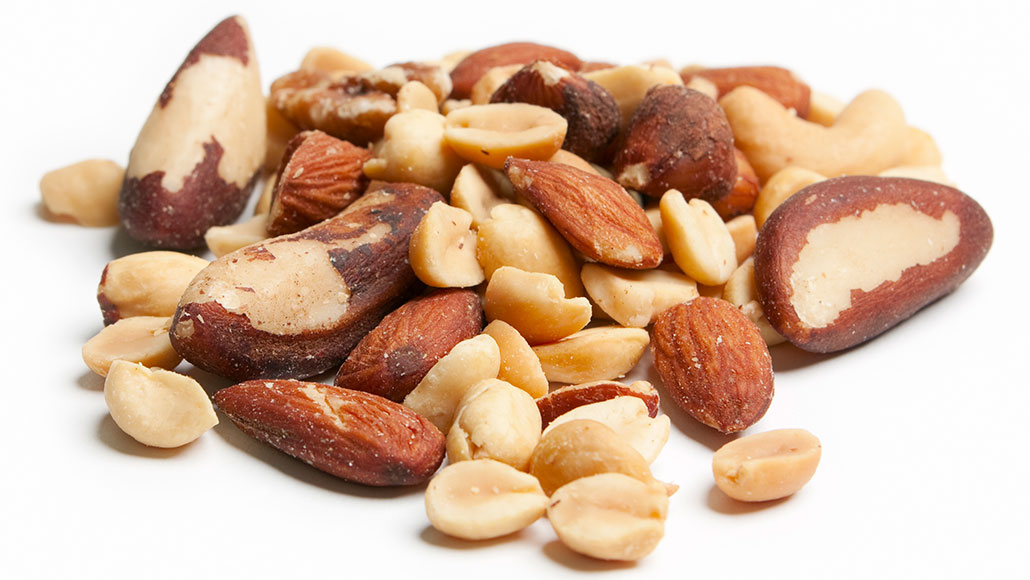Why big nuts always rise to the top
Large, oval-shaped Brazil nuts flip vertically, letting smaller nuts fall below

A new experiment helps explain how those big Brazil nuts end up at the top of containers of mixed nuts.
Boblin/E+/Getty Images Plus
Share this:
- Share via email (Opens in new window) Email
- Click to share on Facebook (Opens in new window) Facebook
- Click to share on X (Opens in new window) X
- Click to share on Pinterest (Opens in new window) Pinterest
- Click to share on Reddit (Opens in new window) Reddit
- Share to Google Classroom (Opens in new window) Google Classroom
- Click to print (Opens in new window) Print
A new experiment reveals, in a nutshell, why the largest particles in some mixtures gather at the top.
Large Brazil nuts are notorious for ending up at the top of packages of mixed nuts. That’s why scientists call this phenomenon the Brazil nut effect. But it also occurs in cereal boxes, where larger pieces tend to collect on top. The Brazil nut effect can even cause larger rocks to cluster on the outsides of asteroids.
Knowing how this effect works could be useful for manufacturing. If engineers know why particles separate by size, they could build better machines to avoid the issue. That could lead to more uniform mixtures of ingredients for food processing. Or more even sprinklings of powdered medicine in pills or asthma inhalers.
This Brazil nut effect has been tough to crack, says Parmesh Gajjar. He’s an imaging scientist. He works at the University of Manchester in England. The problem is that it’s hard to track how individual objects move around in the middle of a mixture. Gajjar’s team overcame this challenge with CT scans using X-rays. Those images tracked the motion of individual peanuts and Brazil nuts in a box as it was shaken. This helped the researchers create the first 3-D videos of the Brazil nut effect in action.
The team reported its findings April 19 in Scientific Reports.
At first, the large oval-shaped Brazil nuts in the box mostly laid sideways. But as the box shook back and forth, the nuts bumped into each other. Those collisions nudged some Brazil nuts to point vertically. That up-and-down orientation was the key to Brazil nuts rising through the pile. It opened up space around the Brazil nuts for smaller peanuts above to tumble down. As more peanuts gathered at the bottom, they pushed the Brazil nuts upward. This helps solve one of life’s little mysteries for mixed-nut lovers. But that’s peanuts compared to the good it could do for the food or drug industry.







